Planting Rhubarb As A Fantastic Addition To A Low-Maintenance Food-Producing Garden

PERENNIALS > RHUBARB

Elizabeth is a Permaculture Garden Designer, Sustainability Consultant and Professional Writer, working as an advocate for positive change. She graduated from the University of St. Andrews with an MA in English and Philosophy and obtained a Diploma in Applied Permaculture Design from the Permaculture Association.
Reviewed By PETER LICKORISH

Peter is a Horticulture Lecturer and self-employed Horticulturist, with a passion for diverse areas of the industry - from garden design to the science behind plant growth and propagation. He has completed the Royal Horticultural Society’s Master of Horticulture (MHort) Award and lectures on RHS courses at Bedford College.
IN THIS GUIDE
Rhubarb is a vegetable that often masquerades as a fruit – but it is far more than just that and can be a very useful addition to your garden.
As a perennial vegetable, rhubarb can be a fantastic addition to a low-maintenance food-producing garden.
Unlike annual and biennial crops, perennial vegetables like rhubarb will return to provide you with an edible yield year after year.
Overview
| Botanical Name | Rheum x hybridum |
| Common Name(s) | Rhubarb |
| Plant Type | Perennial Vegetable |
| Native Area | Cultivated |
| Foliage | Deciduous |
| When To Sow | January, February, March, October, November, December |
Sunlight
Preferred
Full Sun
Exposure
Exposed or Sheltered
Size
Height
0.5 – 1M
Spread
0.5 – 1.5M
Soil
Preferred
Most Fertile Soil Types
Moisture
Moist but well drained
pH
Any
Commonly cultivated culinary rhubarb plants are classified as Rheum x hybridum.
Interestingly, no one knows exactly how these modern culinary garden plants were bred, or their exact origins.
Two different species – R. rhabarbarum and R. rhaponticum were grown in Europe prior to the 18th Century.1Mahr, S. (n.d.-j). Rhubarb, Rheum rhabarbarum. Wisconsin Horticulture. Retrieved March 23, 2023, from https://hort.extension.wisc.edu/articles/rhubarb-rheum-rhabarbarum/
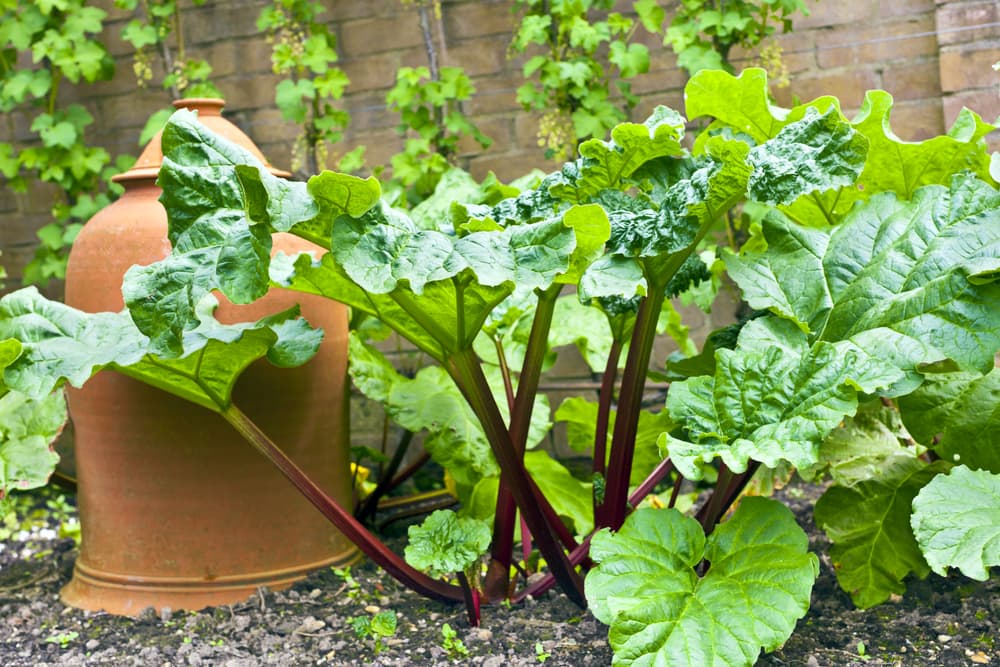
By the early 18th century, these two species and a hybrid of unknown origin – R. x hybridum, were commonly cultivated as vegetable crops in the UK and elsewhere in northern Europe.2Rheum hybridum (rhubarb). (2022, January 7). CABI Compendium. Retrieved August 14, 2023, from https://doi.org/10.1079/cabicompendium.47109
The wild plants hybridise easily, and many cultivars have been developed.
Culinary rhubarbs share a number of characteristics with their wild cousins, but have botanical distinctions.

People often question whether rhubarb is a fruit – and botanically speaking, it is not.
It is a vegetable because the part of the plant that we eat is the leaf stalks or stems, known as a petiole, not a fruit.3Pettit, S. (2015, March 18). Rhubarb. Hatfield Peverel Allotment Association. Retrieved March 23, 2023, from https://www.hpaa.org.uk/index.php/vegetable-fruit-growing/275-rhubarb
However, in culinary settings, rhubarb is often treated like a fruit, since it is used to make sweet dishes in similar ways.
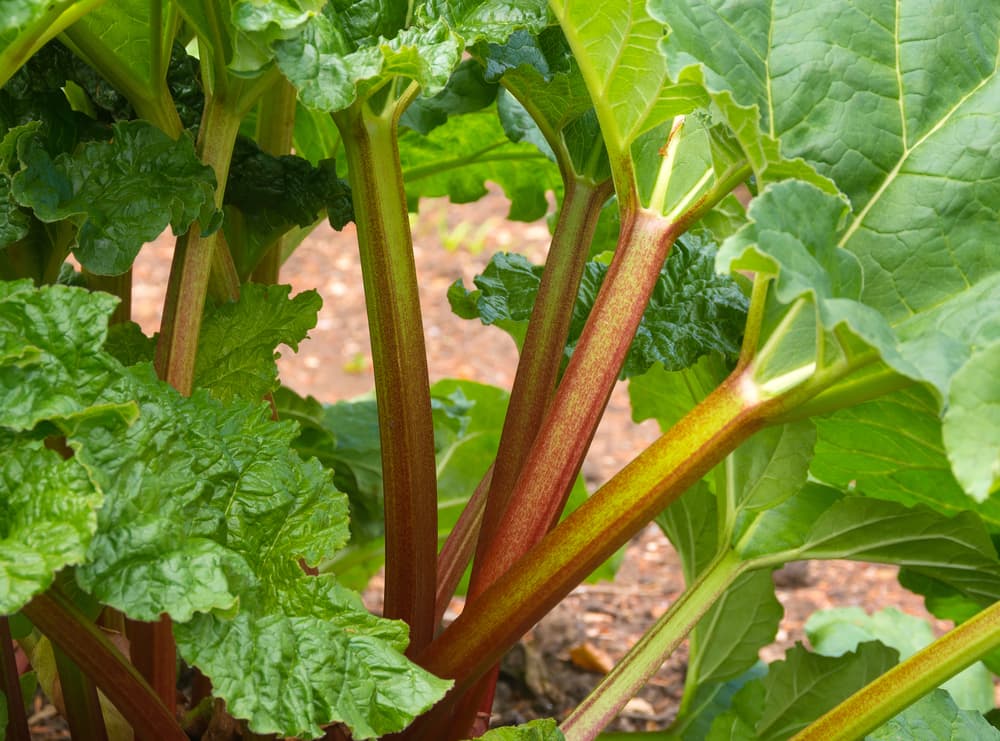
Rhubarb has a strong, tart taste, and while the stems can also be eaten raw, they are usually cooked and mixed with sugar or other sweeteners to make pies, crumbles and other desserts or preserves.
Why Grow Rhubarb?
Rhubarb can be a useful way to enhance your homegrown fruit and vegetables.
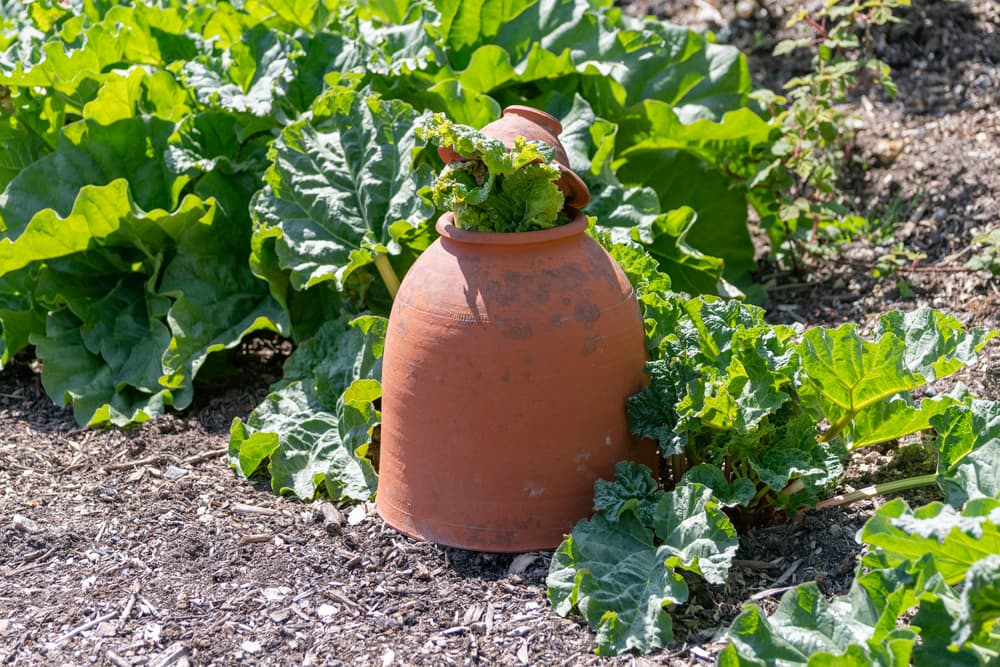
Growing perennial plants in general can be a very good idea – they bring a range of benefits for the garden including:
- You will need to do less work in sowing and planting. Perennial plants like rhubarb only need to be planted once and will last a number of years. While annual crops will involve work annually to continue to enjoy them in your garden.
- You’ll need to do less ongoing work maintaining soil too. Growing areas with perennial planting typically require far less care and weeding over time.
- You will also typically spend much less time watering or fertilising perennial crops than you will maintaining an annual garden over time.
As a perennial vegetable, rhubarb can be a great thing to grow for all of the reasons outlined above – but more specifically, it can be a very useful garden plant.

Rhubarb provides a yield during what was historically known as the ‘hungry gap’.
This was the time between winter stores running low, and late spring / early summer harvests.4What actually is The Hungry Gap? (2021, March 31). The Community Farm. Retrieved March 23, 2023, from https://www.thecommunityfarm.co.uk/news/what-actually-is-the-hungry-gap
So growing rhubarb means that you will have food from your garden all year – even during times when, historically, there is far less homegrown food available.
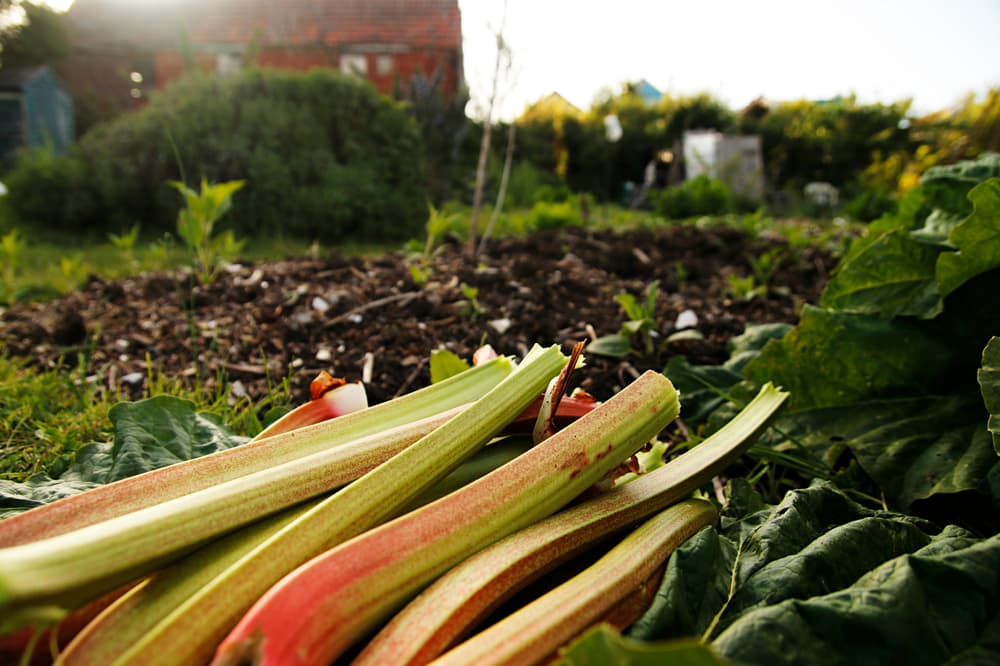
This is especially true when the rhubarb is forced to bring forward the harvest.
Planting Rhubarb
Rhubarb will do best in a sunny location, which has fertile and moist yet free-draining type of soil.
“I fess up – I’ve had to bend the rules on shade to get rhubarb to establish well,” says Master Horticulturist Peter Lickorish.
“I find that in the sunniest spots, it tends to bake a little too much, whereas in partial shade, I find it is less likely to dry out. Even with generous watering, I’ve known this plant to have a near-unquenchable thirst.
“That is true of the summer, whereas in the winter, sitting too wet would be a problem.”
Make sure you do not place rhubarb in a frost pocket or an area that becomes waterlogged in the winter months.

Rhubarb is usually grown from crowns – dormant rhubarb crowns will typically be planted between autumn and early spring.
Position the rhubarb crown so that the very top of the crown just emerges from the soil surface.
Generally speaking, it is best to leave a space of around 80cm between the plants.
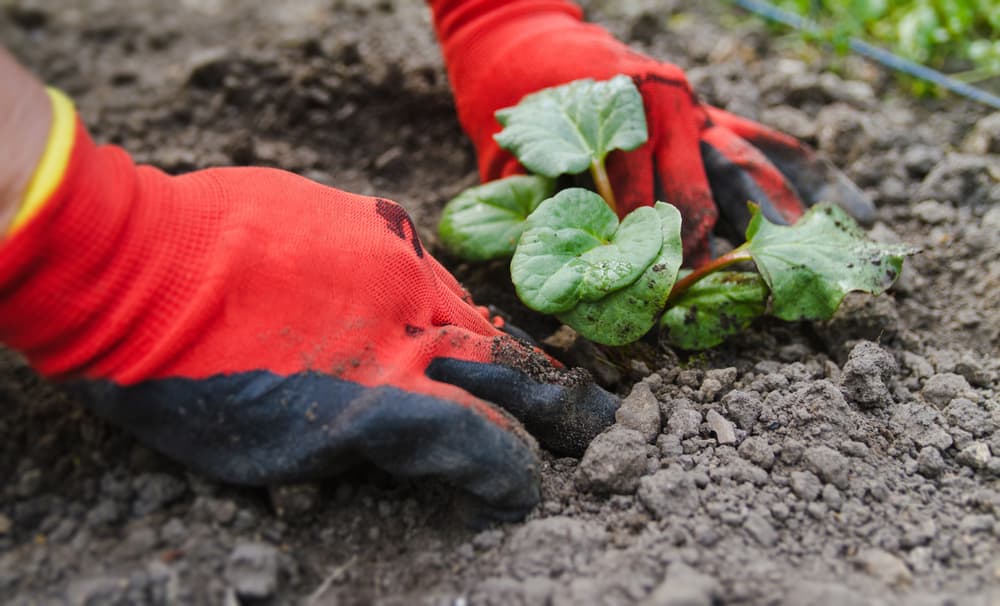
Rhubarb can also be grown in containers, as long as they are a minimum of 50 cm deep and 50 cm wide.
When planting, it is a good idea to add a mulch of homemade compost or well-rotted manure around the plant.
This will act as a slow-release fertiliser and retain soil moisture, but make sure you do not bury the crown or leave mulch piled closely around it or it can rot.
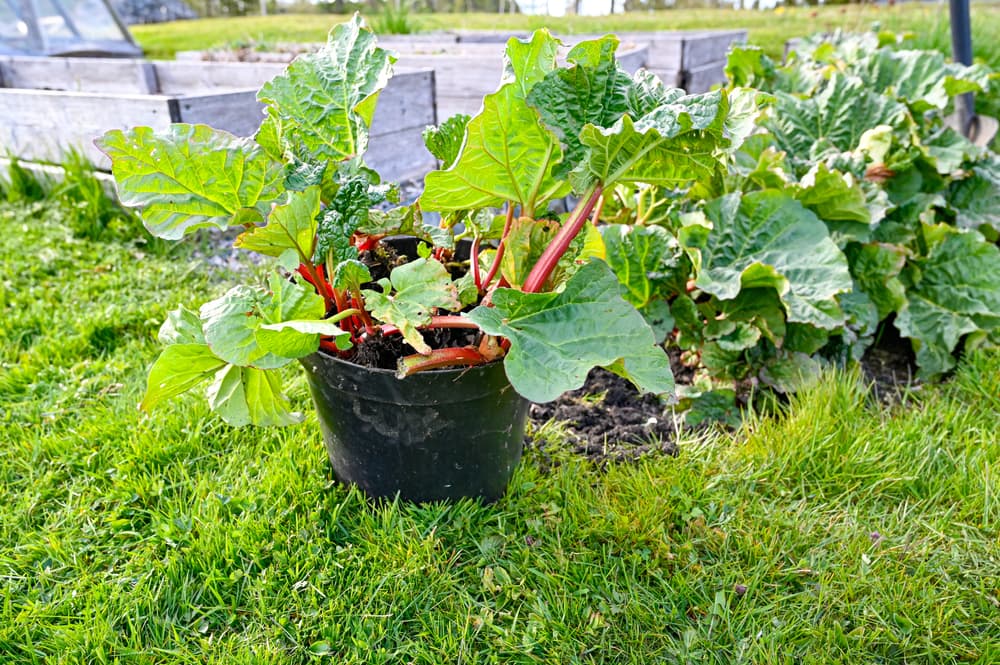
You can also purchase pot-grown rhubarb plants throughout the year.
These can be planted out at any time, but to avoid transplantation shock, it is best to avoid planting out on very hot or dry days in the summer.
Companion Planting

Rhubarb works very well as one of the plants in a perennial growing area with edible plants.
It typically grows well beside other perennial plants – perennial alliums (chives and elephant garlic, for example).
Rhubarb also has a scent said to repel whiteflies, and so it can be a useful companion plant for members of the cabbage family.
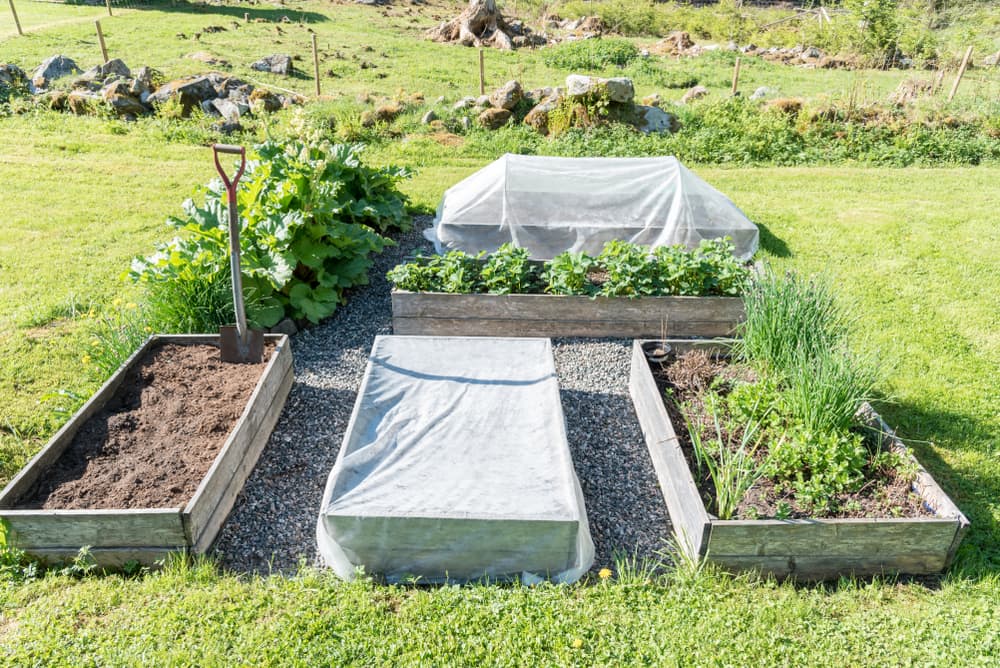
This means it can work well in a perennial bed alongside perennial brassicas such as Daubenton’s kale, tree cabbage, and ewiger kohl, for example.
Place strawberries close to rhubarb, since these will be beneficial as ground cover.
They will spread to keep weed growth down and help retain soil moisture.
A number of perennial aromatic herbs can also be beneficial as companion plants.
Rhubarb Plant Care
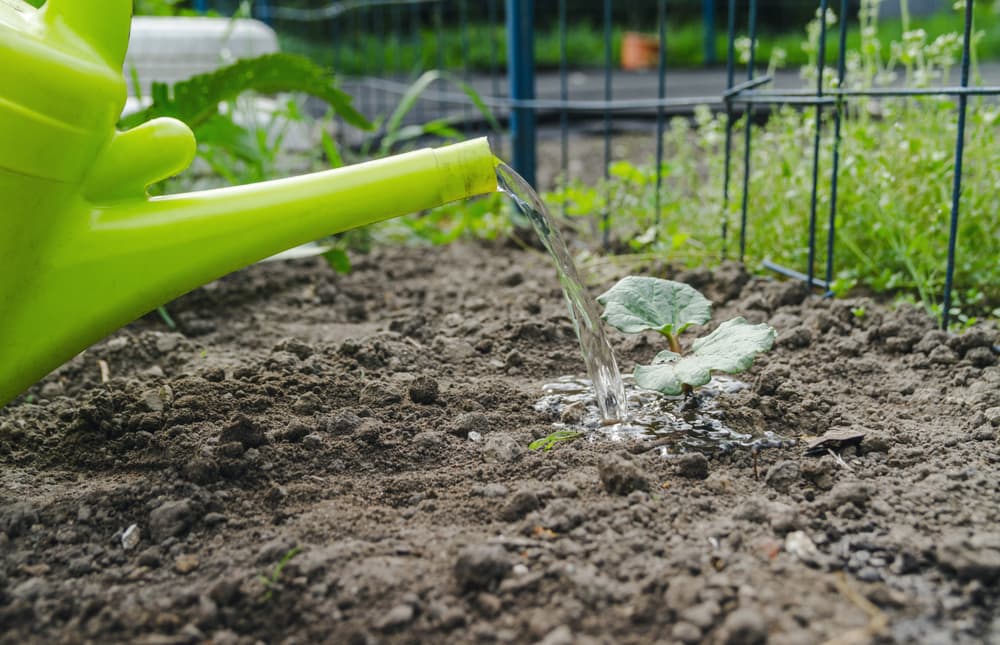
Make sure that the rhubarb gets enough water throughout the year, so the plant keeps growing right through to autumn.
Make sure that you provide water during any dry spells.
You can also consider optimising yield and vigour by adding a general-purpose organic fertiliser in March.
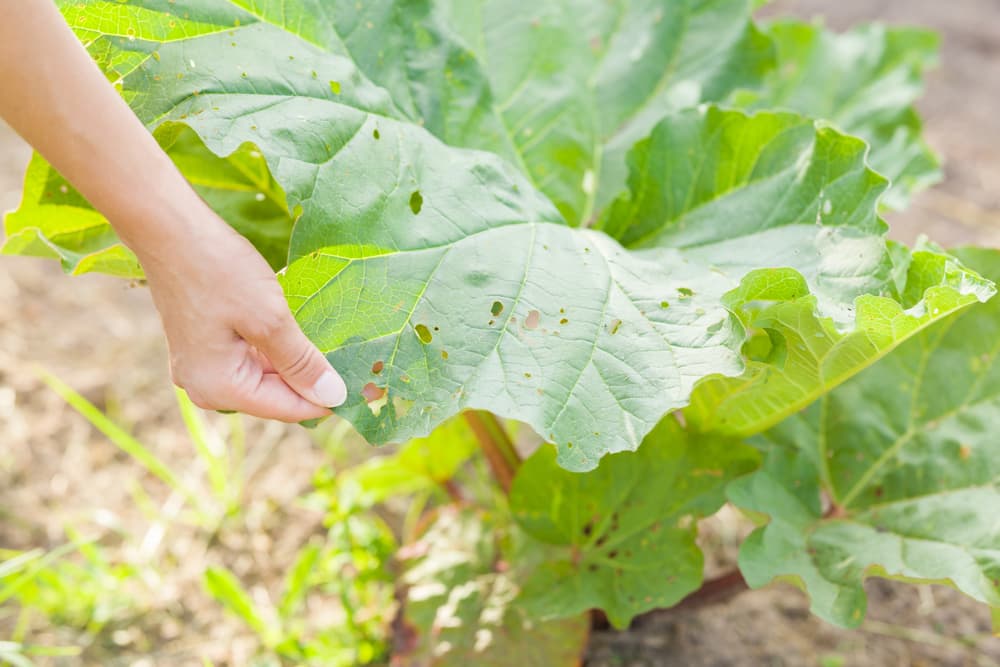
Other than this, however, rhubarb really will require very little care.
You have the option of forcing the rhubarb, but you do not have to do so.
You can also divide a mature plant – allowing you to increase your yield over time.
It can also be a good idea to remove the dead leaves when the plant dies back naturally in the autumn, and to clear debris around the crown.

This will help make sure it is exposed to frost, which helps break dormancy and ensures a good crop of stalks the following year.
“It is a favourite of the slug population in my garden in early spring, so using wool pellets as mulch is a good idea,” adds Peter.
References
- 1Mahr, S. (n.d.-j). Rhubarb, Rheum rhabarbarum. Wisconsin Horticulture. Retrieved March 23, 2023, from https://hort.extension.wisc.edu/articles/rhubarb-rheum-rhabarbarum/
- 2Rheum hybridum (rhubarb). (2022, January 7). CABI Compendium. Retrieved August 14, 2023, from https://doi.org/10.1079/cabicompendium.47109
- 3Pettit, S. (2015, March 18). Rhubarb. Hatfield Peverel Allotment Association. Retrieved March 23, 2023, from https://www.hpaa.org.uk/index.php/vegetable-fruit-growing/275-rhubarb
- 4What actually is The Hungry Gap? (2021, March 31). The Community Farm. Retrieved March 23, 2023, from https://www.thecommunityfarm.co.uk/news/what-actually-is-the-hungry-gap
